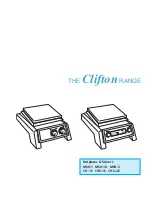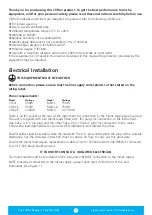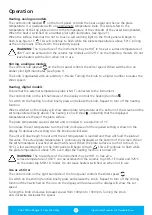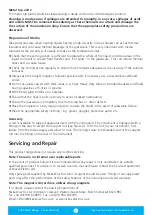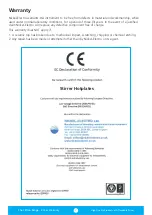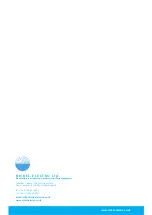
The Clifton Range - 3 Year Warranty
5
High Quality Products at Affordable Prices
Use as a Temperature Controller using the External Probe CHS-1E, MSH-1D only
These units are supplied with a temperature probe to allow direct control of liquid temperature.
NOTE:
Before attaching probe, mains supply must be turned off.
To use the probe first insert the connector into the socket on the rear of the instrument (see fig 2)
and place the probe into the vessel containing the liquid. Switch on the heating function by briefly
depressing the control knob. The heating icon in the display will show indicating that the displayed
temperatures are those of the liquid rather than the plate surface.
When switched on the display will show actual liquid temperature at the bottom of the screen and
the set temperature directly above.
The liquid temperature can be selected and controlled to a resolution of 1°C.
To increase the set temperature turn the knob clockwise until the required setting is shown in the
display. To decrease the setting turn the knob anti-clockwise.
The unit will now begin to heat until the set temperature is reached and then will hold the liquid at
this value. The actual liquid temperature is continuously displayed at the bottom of the screen.
Note that the maximum liquid temperature is limited to 200°C.
Guidance Notes
1. For optimum temperature control please ensure the contents of the beaker are stirred adequately.
2. Keep the unit out of strong drafts.
3. Allow the temperature adequate time to stabilise.
Safety Advice
❖
Do not use the instrument to heat flammable liquids
❖
Never lift or carry the instrument until it has been switched off and allowed to cool for at least 30
minutes. The hot warning light will give guidance.
❖
The unit should be carried using both hands with the fingers under the side edges.
❖
Never move or carry the unit with containers on the top plate or while still connected to the mains
supply.
❖
There is a danger of liquid spillage if containers are over-filled and stirred at high speed. Always
build stirrer speed slowly and never stir more rapidly than necessary.
❖
NEVER place a cold glass vessel onto a hotplate which is already hot.
Cleaning and Care
Before attempting cleaning:-
Ensure that the top is cool, disconnect from the mains electricity supply.
The metal casing should be cleaned using a damp cloth and a mild detergent solution.
Ceramic top units:
A damp cloth will normally remove most types of contamination. For more difficult stains a domestic
cream cleanser is recommended.
Cleaning is made easier if spillages are attended to promptly. In any case, spillages of alkali,
phosphoric acid and hydrofluoric acid MUST be removed immediately as these chemicals can
attack and damage the glass ceramic. Ensure that the appropriate safety precautions are
observed.
During cleaning and general operation take care not to scratch the surface of the top plate as this
could result in subsequent thermal breakage.
WARNING:
A ceramic top which is scratched, chipped, chemically etched or damaged must not
be used.

